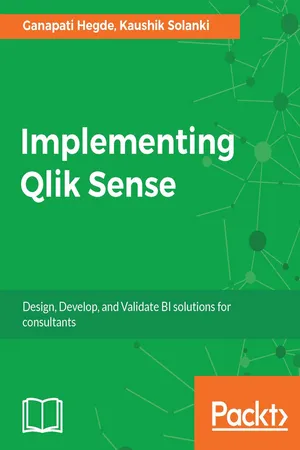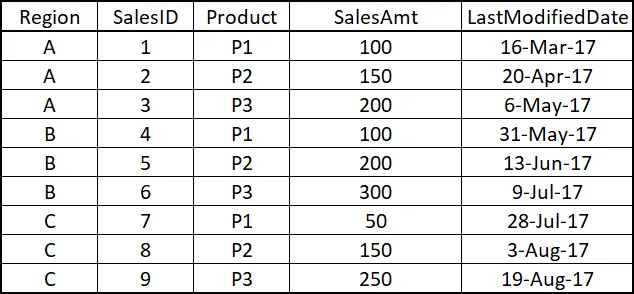
- 438 pages
- English
- ePUB (mobile friendly)
- Available on iOS & Android
Implementing Qlik Sense
About This Book
Become a full-fledged Qlik Sense Consultant with the help of this unique guideAbout This Book• Become a successful Qlik consultant with the help of this insightful guide• Build what is in line as well as exceeding your customer's expectations from your Qlik Sense solutions using this highly practical guide• Build result-driven optimized BI solutions using Qlik with the help of industry examplesWho This Book Is ForIf you have basic familiarity with Qlik Sense and want to upgrade your skills to become a full-fledged Qlik Consultant, this book is for you. With this book, you will be able to create efficient business intelligence solutions that would fetch client satisfaction, and in turn, more projects.What You Will Learn• Understand the importance and expectations of a consultant's role• Engage with the customer to understand the ir goals and future objectives• Design the optimum architecture, using the best practices for the development and implementation of your projects• Ensure successful adoption using real-life examples to make your learning complete• Learn about the important stages of a Qlik project's life cycleIn DetailQlik Sense is a leading platform for business intelligence (BI) solutions. Qlik Sense helps organizations in making informed decisions based on the data they have.This book will teach you how to effectively use Qlik for optimum customer satisfaction. You will undergo a metamorphosis from a developer to a consultant who is capable of building the most suitable BI solutions for your clients. The book will take you through several business cases – this will give you enough insight to understand the needs of the client clearly and build a BI solution that meets or exceeds their expectations. Starting from the pre-project activities, you will go to the actual execution of the project, the implementation, and even maintenance. This book will give you all the information you need - from the strategy to requirement gathering to implementing BI solutions using Qlik Sense.The book will empower you to take the right decisions in tricky and diffi cult situations while developing analytics and dashboards.Style and approachThis book will be a hands-on guide that will teach you all the what-to-do's, when-to-do's, and how-to-do's for becoming a successful Qlik Sense Consultant. With the help of various business scenarios, the book will cover real-world problems that you can relate to.Various solutions in the book will be backed up by the thought process of why are these solutions used and how you can implement them in your own business environment.
Frequently asked questions
Information
Development
- Data extraction process
- Building data model
- Common challenges of data modeling
- Script management
- Best practices in data modeling
- Data modeling validation
- Security strategy
- Visualization strategy
- Choices of objects
- Use of extensions
- Visualization best practices
- Story telling
Data extraction process
Extract, Transform, and Load (ETL)

Extract
- Full load
- Incremental load
Full Load


Incremental Load
Table of contents
- Title Page
- Copyright
- Credits
- About the Authors
- About the Reviewers
- www.PacktPub.com
- Customer Feedback
- Preface
- Consultant - An Introduction
- Preparing for the Project
- Prerequisites to Start a Project
- Requirement Gathering
- Architecture Design
- Development
- Validation, UAT and Go-Live
- Post Go-Live
- Avoiding Common Pitfalls
- Knowledge Sets
- A Real Life Case-Study